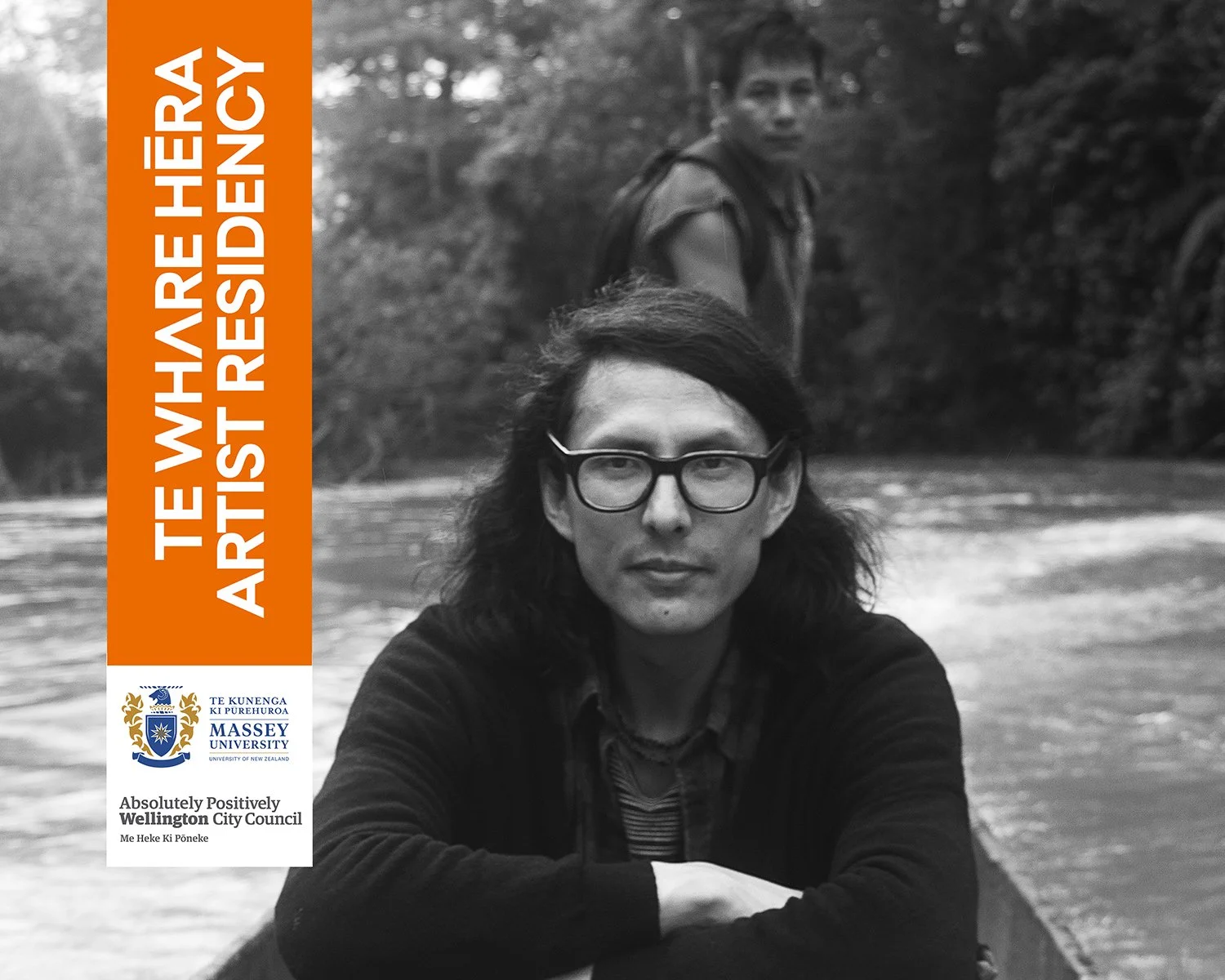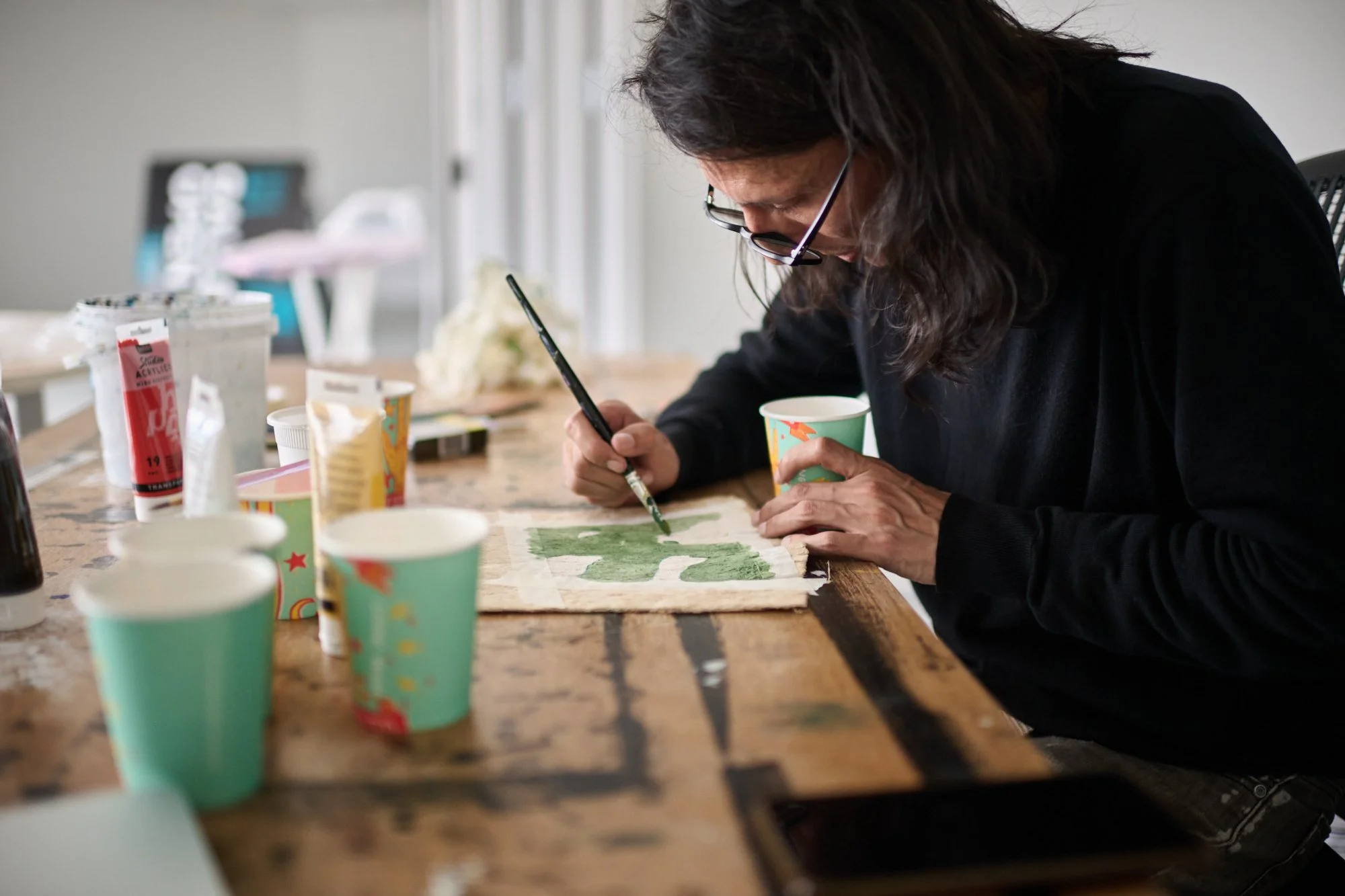Rubén Darío Díaz Chávez joins Te Whare Hēra
In August 2025, Te Whare Hēra welcomes Ecuadorian artist, researcher and cultural leader Rubén Darío Díaz Chávez to the Pukeahu campus in Wellington for a month-long residency exploring resistance, cultural dialogue and the possibilities of reconciliation through art.
Rubén arrives on 3 August with his son Bastián and will be based at the Te Whare Hēra studio, working alongside students and staff at Te Kunenga ki Pūrehuroa Massey University’s Whiti o Rehua School of Art. His residency will culminate in an exhibition at The Engine Room, running from 13–27 August.
A collaboration between Toi Rauwhārangi College of Creative Arts (CoCA) and Wellington City Council, Te Whare Hēra has hosted artists from around the globe for the past decade.
Rubén’s stay continues this tradition of creative and cultural exchange, offering fresh perspectives to both students and the wider art community in Wellington.
A cross-cultural practice rooted in community
Rubén Darío Díaz Chávez is a researcher, curator and cultural manager whose career spans Latin America, Europe and Asia. His research touches on themes as diverse as quantum realism, independent art spaces in Latin America and Sapara Indigenous culture in the Ecuadorian Amazon.
He is the founder, director and curator of No Lugar – Arte Contemporáneo and Ripanu, both platforms for experimental and socially engaged art practices in Ecuador. His ongoing collaboration with Sapara leader Gloria Ushigua reflects his commitment to Indigenous rights, environmental justice and epistemic diversity, values he is eager to explore further during his time in Aotearoa New Zealand.
The focus of his residency is to develop a series of works exploring relationships with Indigenous peoples, acts of resistance and processes of cultural conciliation through the lens of contemporary art.
Collaborative exchange at the heart of the residency
Rubén will work closely with Associate Professor Richard Reddaway, who is hosting him during the residency, and will engage directly with fine arts students. His programme will include guest lectures, workshops and informal kōrero with students, as well as the development of new artwork throughout his time here.
Mr. Reddaway says, “Rubén’s practice is deeply rooted in collaboration. He’s genuinely committed to art as a means for dialogue, and he brings a wealth of experience from working across communities, geographies and disciplines. His presence here will be a real gift to our students.”
The month-long stay is also an opportunity for Rubén to engage with Aotearoa’s own histories of Indigenous resistance, cultural revitalisation and bicultural practice, themes that closely mirror those in his own work with the Sapara people in the Amazon.
Rubén’s residency is one of six scheduled at Te Whare Hēra for 2025. Each artist brings a distinct voice to the programme, but all contribute to a wider kaupapa of cultural exchange, experimentation and public engagement.
During their stay, artists are encouraged to connect with Massey’s students and staff, and with Wellington’s broader creative community.
Article by Dale Wicken, July 2025.
Rubén Darío Díaz Chávez working in the Te Whare Hēra studio
Exhibition Announced:
Amazonia: Sapara Kaku
(Amazonia, The Sapara Universe)
20-27 August, 12-4pm
The Engine Room, Block 1, Wallace Street, Mount Cook, Massey University
https://www.tewharehera.ac.nz/events/amazonia-sapara-kaku-amazonia-the-sapara-universe

